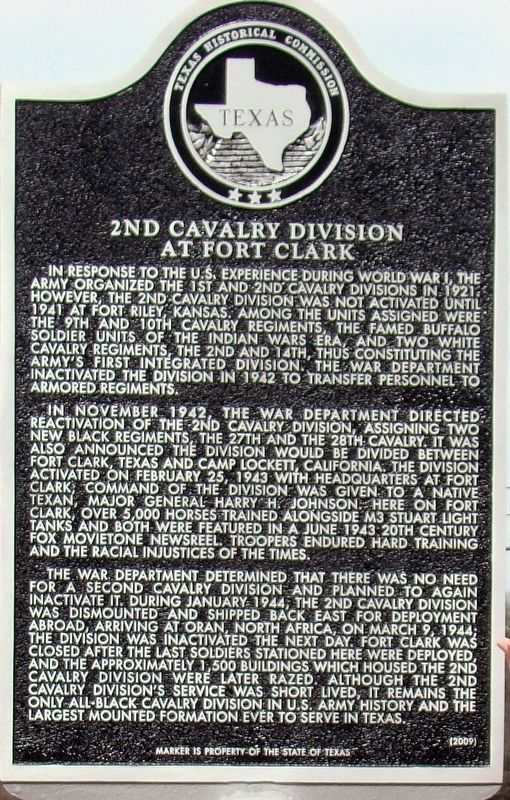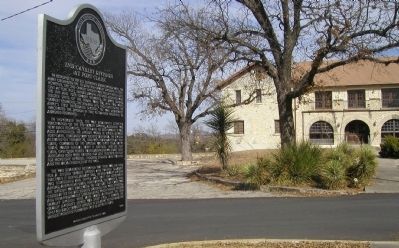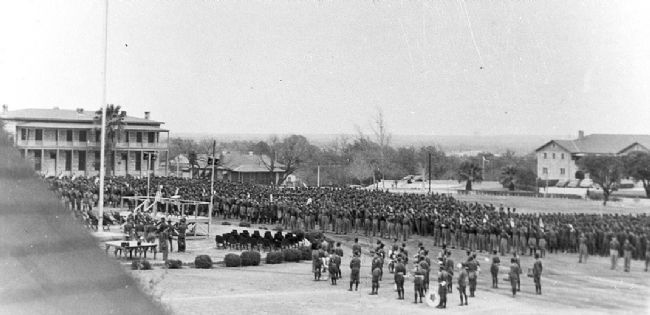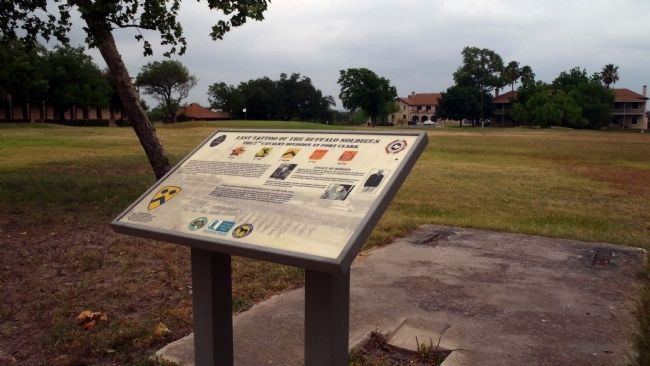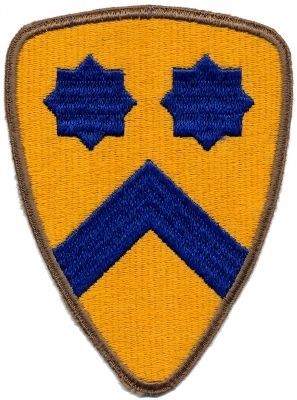Near Brackettville in Kinney County, Texas — The American South (West South Central)
2nd Cavalry Division at Fort Clark
In November 1942, the War Department directed reactivation of the 2nd Cavalry Division, assigning two new black regiments, the 27th and the 28th Cavalry. It was also announced the division would be divided between Fort Clark, Texas and Camp Lockett, California. The division activated on February 25, 1943 with headquarters at Fort Clark; command of the division was given to a native Texan, Major General Harry H. Johnson. Here on Fort Clark, over 5,000 horses trained alongside M3 Stuart light tanks and both were featured in a June 1943 20th Century Fox Movietone newsreel. Troopers endured hard training and the racial injustices of the times.
The War Department determined that there was no need for a second cavalry division and planned to again inactivate it. During January 1944, the 2nd Cavalry Division was dismounted and shipped back east for deployment abroad, arriving at Oran, North Africa, on March 9, 1944; the division was inactivated the next day. Fort Clark was closed after the last soldiers stationed here were deployed, and the approximately 1,500 buildings which housed the 2nd Cavalry Division were later razed. Although the 2nd Cavalry Division’s service was short lived, it remains the only all-black cavalry division in U.S. Army history and the largest mounted formation ever to serve in Texas.
Erected 2010 by Texas Historical Commission. (Marker Number 16260.)
Topics and series. This historical marker is listed in these topic lists: African Americans • War, World II. In addition, it is included in the Buffalo Soldiers series list. A significant historical year for this entry is 1921.
Location. 29° 18.428′ N, 100° 25.226′ W. Marker is near Brackettville, Texas, in Kinney County. Marker can be reached from the intersection of Swim Park Lane and MacKenzie Road, on the right when traveling west. Marker is on the grounds of the Fort Clark Springs Association in the Fort Clark National Register Historic District and is accessible to the public. Touch for map. Marker is in this post office area: Brackettville TX 78832, United States of America. Touch for directions.
Other nearby markers. At least 8 other markers are within walking distance of this marker. Seminole-Negro Indian Scout Detachment (a few steps from this marker);
U.S. Army Unit Memorial (a few steps from this marker); Officers' Club Open Mess (within shouting distance of this marker); Officers Quarters 2-3 and 4 (about 400 feet away, measured in a direct line); Fort Clark Historic District (about 500 feet away); Fight at Las Moras Spring (about 500 feet away); Army Service Club (about 500 feet away); Remolino Raid (about 600 feet away). Touch for a list and map of all markers in Brackettville.
Regarding 2nd Cavalry Division at Fort Clark. The 2nd Cavalry Division was the “Last Tattoo” of the Buffalo Soldiers. More Buffalo Soldier units served at Fort Clark than at any post in the nation.
Credits. This page was last revised on April 1, 2023. It was originally submitted on April 29, 2012, by William F Haenn of Fort Clark (Brackettville), Texas. This page has been viewed 2,079 times since then and 64 times this year. Last updated on March 23, 2023, by Carl Gordon Moore Jr. of North East, Maryland. Photos: 1. submitted on March 23, 2023, by William F Haenn of Fort Clark (Brackettville), Texas. 2, 3. submitted on April 29, 2012, by William F Haenn of Fort Clark (Brackettville), Texas. 4. submitted on April 30, 2012, by William F Haenn of Fort Clark (Brackettville), Texas. 5. submitted on August 1, 2012, by William F Haenn of Fort Clark (Brackettville), Texas. • James Hulse was the editor who published this page.
